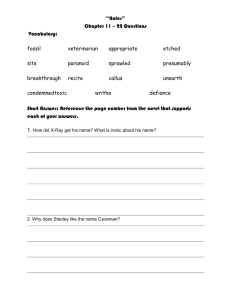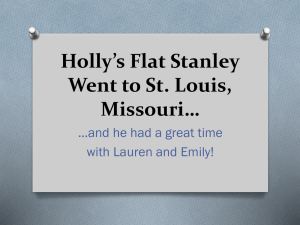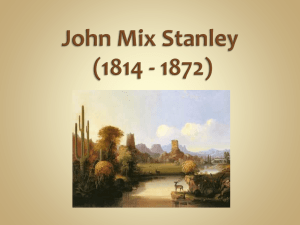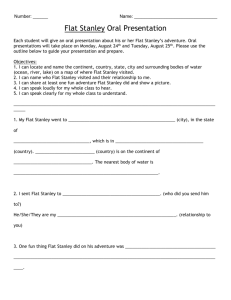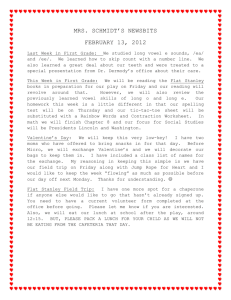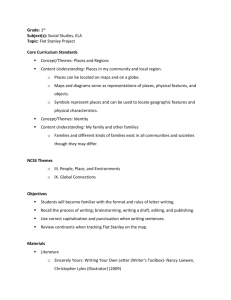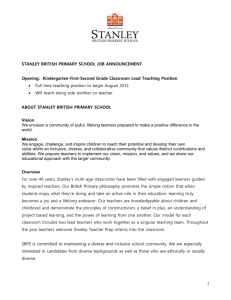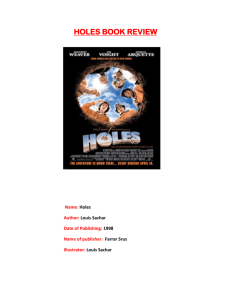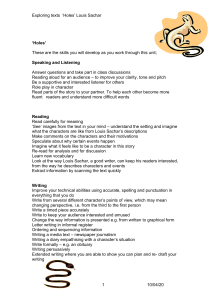S4 Holes (notes and sample essay)
advertisement
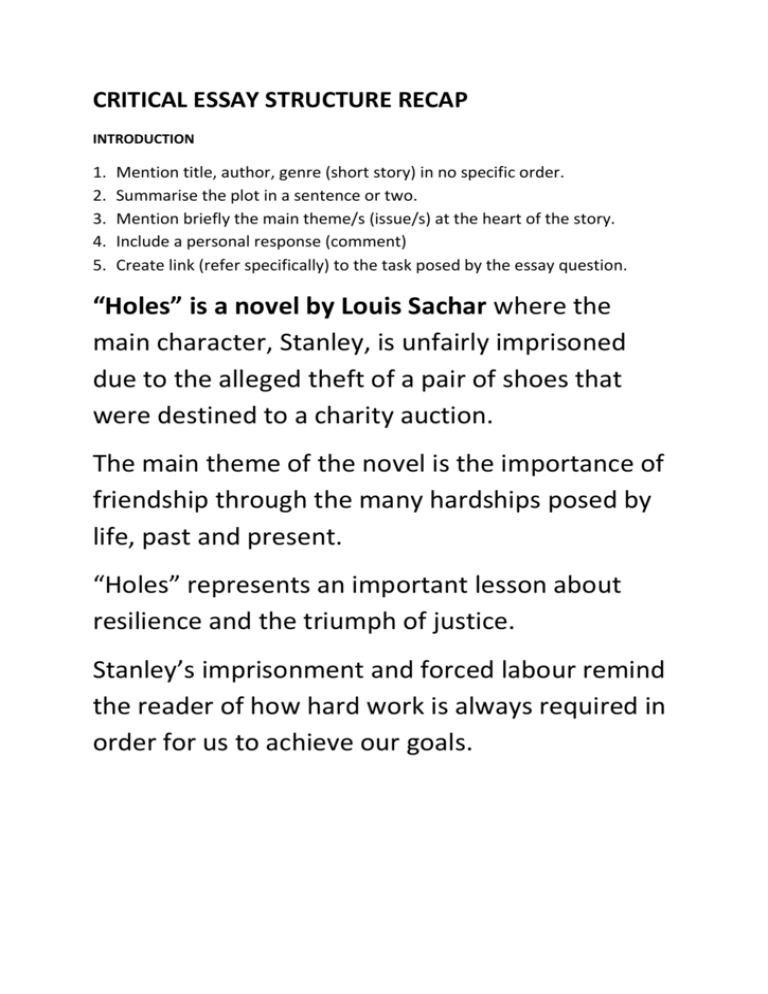
CRITICAL ESSAY STRUCTURE RECAP INTRODUCTION 1. 2. 3. 4. 5. Mention title, author, genre (short story) in no specific order. Summarise the plot in a sentence or two. Mention briefly the main theme/s (issue/s) at the heart of the story. Include a personal response (comment) Create link (refer specifically) to the task posed by the essay question. “Holes” is a novel by Louis Sachar where the main character, Stanley, is unfairly imprisoned due to the alleged theft of a pair of shoes that were destined to a charity auction. The main theme of the novel is the importance of friendship through the many hardships posed by life, past and present. “Holes” represents an important lesson about resilience and the triumph of justice. Stanley’s imprisonment and forced labour remind the reader of how hard work is always required in order for us to achieve our goals. TECHNIQUE 1 (word choice, rhyme scheme, characterisation etc.) 1. Topic sentence (explaining how the specific technique is relevant to the task posed by the EQ). 2. Quote 1 3. Comment 1 (explaining how the words and expressions, figures of speech, literary techniques and structure address the task posed by the EQ and how our general understanding of the main themes is deepened). 4. Repeat the same as above for Quote 2, 3 and so on. Flashbacks are frequently used in Holes to provide the reader with an idea of time as an inescapable circle where the events of the past eventually always catch up with our present and future. Sachar this way is reminding particularly the younger readers about the importance of our origins, families but also our communities and general history. Gratitude: being able to recognise other’s “Madame Zeroni warned that if he failed to do this, he would be doomed for all eternity” This flashback about how the curse on Stanley’s family began is reminding the main character but also the reader about the importance of honesty, gratitude as they remain the basic requirements for a prosperous life together with our families and ourselves. “I have been wishing I was dead for the past twenty years!” Kate Barlow, a long gone lone heroin whose lover is savagely killed by those who then also become Stanley’s ancestral archenemies, through her sorrowful words is showing us how love and hatred cause endless pain and grief to people across the centuries and across all territories. “It’s a big wasteland out there”, Kate Barlow utters as she promises that her stolen treasure will never be found by those who killed the love of her life in an outburst of racist hatred. SETTING Setting is a further technique used by Sachar to convey the lesson behind the novel. Stanley is sent to a camp called “Camp Green Lake”, now a vast desert, where young offenders are made to dig holes so as “to build their character”. The name “Camp Green” is here highly ironic and significant as it reminds us of the consequences of our past actions, which continue to haunt us until we finally face the truth. The Lake dried up following Sam’s death. And his killer’s future generations are now sentenced by Kate Barlow’s curse to spend the rest of eternity digging holes in vain in search of her treasure. Symbolism Symbols are also used by Sachar throughout the novel to communicate the deeper meaning behind this apparently light-hearted adventure novel for young readers. The shoes donated by the baseball champion become the symbol of an inescapable truth and destiny. And even the laces seem to represent the tie between the two main characters. After Zero and Stanley break free from Camp Green Lake, the truth about the theft by Zero will be revealed so as to close a circle of honesty which always triumphs in the end. Another effective symbol in the novel is the yellow-spotted lizard – lethal though fascinating in its attractive aspect. The lesson lurking behind the use of the lizard is the thin line between life and death we all walk along every day of our lives. Characterisation Sachar also makes use of characterisation to convey the important lesson about honesty and gratitude lying behind the plot. The main character Stanley is described as a quiet, naïve, though smart and hard-working young man who is determined to fix any wrongdoing. Once at Camp Green Lake, he immediately connects and sympathises with Zero as if he saw in him a family member. “I’ll try to teach you how to read, if you want!” Stanley offers his help as a token of appreciation since Zero had dug a lot of his hole. Following this gesture, the two boys are now more than just friends; they are comrades, fighting a common enemy that has taken their truth and freedom away. Eventually, once they both run away from the camp, Stanley will also take Zero up the mountain so as to repair the damage cause by his ancestor’s broken promise with Madame Zeroni. Zero didn’t get up. Stanley bent over him – “Come on, Zero, he urged!” Stanley is a caring friend who is there for his friend in need. And only together as a team, they will make it to the top of a symbolical mountain. Contagion threatening the wider society. CONCLUSION 1. Explain why you think the main theme/s of the story was effectively illustrated by the writer. 2. Mention how the story had an impact on your development as an individual (maturity, increased awareness, appreciation of human qualities). Write about a novel which had a deep impact on you… Intro… First technique: WORD CHOICE The word choice used by Sachar effectively impacts the reader with its poignant significance. It allows the reader to learn the values which are at the heart of a mature and peaceful existence. “For once in his unlucky life, he was in the right place at the right time and it still did not help him!” After the first day of forced labour at Camp Green Lake, the main character Stanley senses that his imprisonment represents an important stage in his personal growth and maturity. A hurdle that he has to overcome if he wants to solve his family and friends’ problems. The reader is here impacted by this sense of an unavoidable destiny that drags Stanley into a more and more challenging future. “Higher and higher he climbed. His strength came from somewhere deep inside himself and also seemed to come from outside as well" While Stanley is helping his friend Zero who is unable to climb the mountain ‘Big Thumb’, the word choice here effectively creates an image of the main character as a predestined – someone who sees their mission as a voice inside of them and outside of them too. The idea of a fate that has to be pursued has a strong impact on the reader because of its almost supernatural appeal.
